
cd_nom
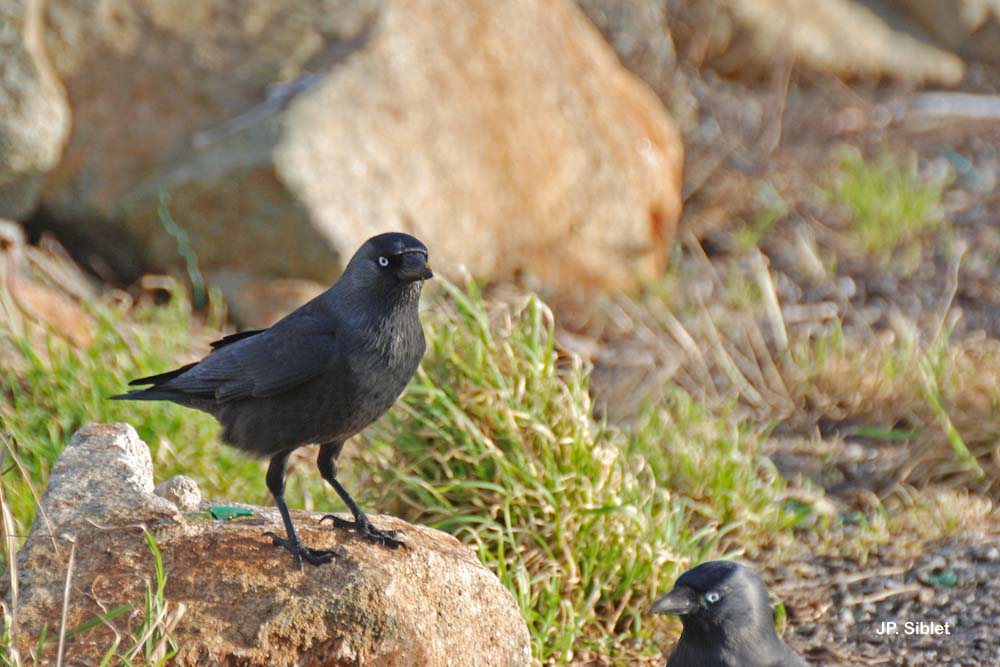
| Author : J.P. Siblet |
 |
To get the picture, please visit:
Jean-Philippe Siblet - Directeur
Muséum national d'Histoire naturelle - Service du Patrimoine Naturel
36 rue Geoffroy Saint-Hilaire
CP 41
75 231 PARIS CEDEX 05
e-mail : siblet@mnhn.fr
Despite the Creative Commons license, please inform the author of the use which will be made of his photo
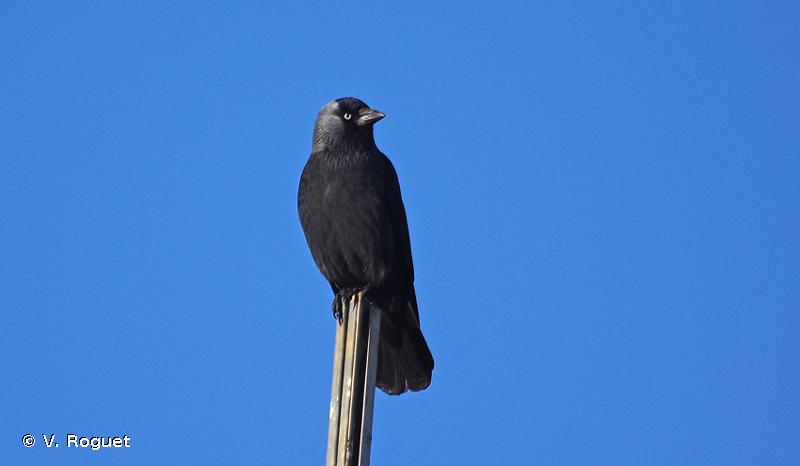
| Author : V. Roguet |
 |
To get the picture, please visit:
Véronique Roguet
286 Tour des Dallest
13830 Roquefort la Bédoule
email : inpn@mnhn.fr
Despite the Creative Commons license, please inform the author of the use which will be made of his photo

| Author : S. Wroza |
 |
Despite the Creative Commons license, please inform the author of the use which will be made of his photo

| Author : S. Wroza |
 |
Despite the Creative Commons license, please inform the author of the use which will be made of his photo
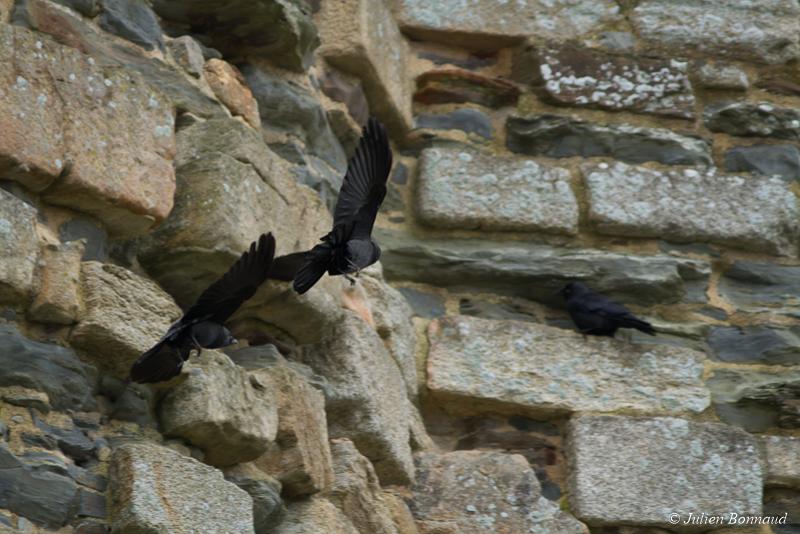
 |
To get the picture, please visit:
Julien Bonnaud
email : inpn@mnhn.fr
Any reuse of one or more photographs on this site is subject to an authorization request from the author.
Link to the Code of Intellectual Property (Legifrance)
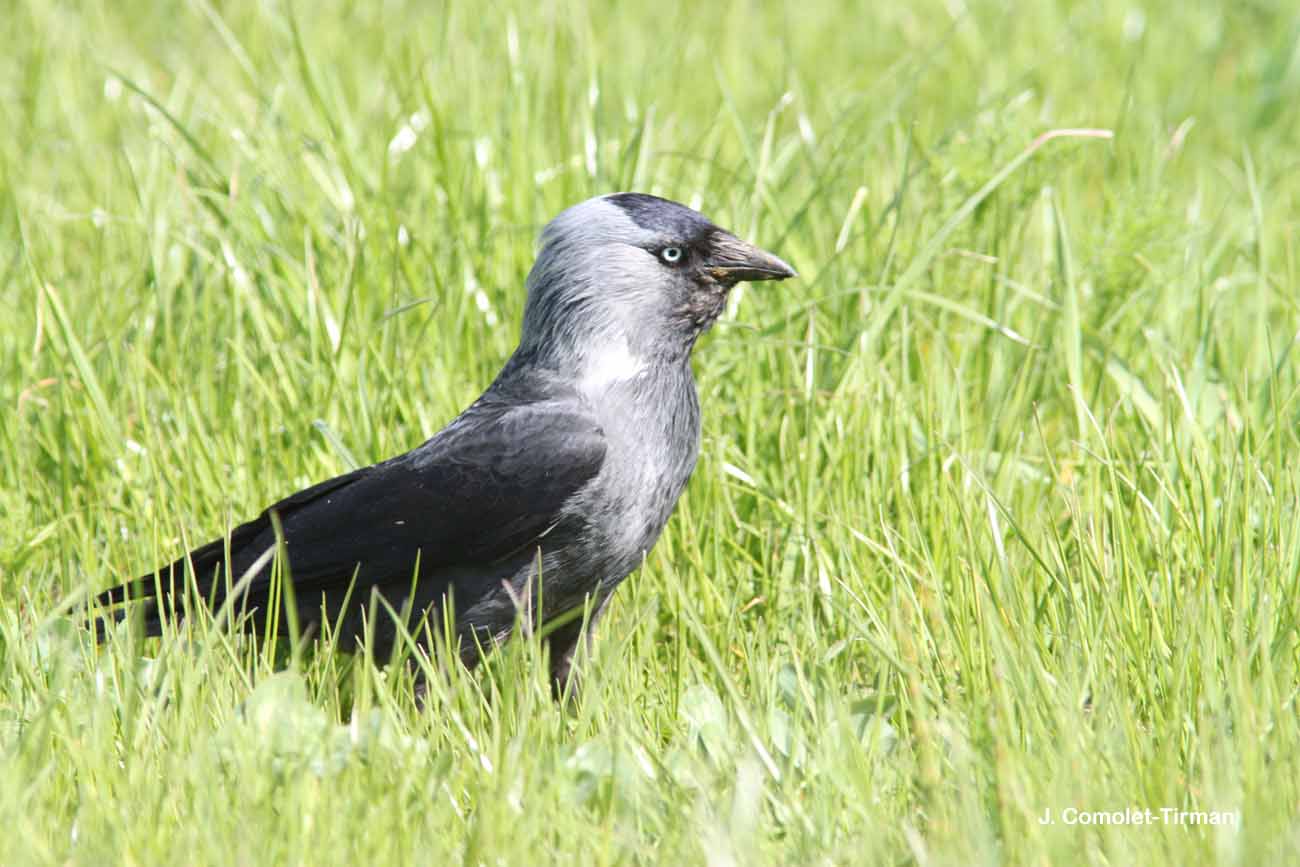
| Author : J. Comolet-Tirman |
 |
To get the picture, please visit:
Jacques COMOLET-TIRMAN
Muséum national d'Histoire naturelle - Service du Patrimoine Naturel
36 rue Geoffroy Saint-Hilaire
CP 41
75 231 PARIS CEDEX 05
e-mail : inpn@mnhn.fr
Legend: Pologne - 2011
Any reuse of one or more photographs on this site is subject to an authorization request from the author.
Link to the Code of Intellectual Property (Legifrance)
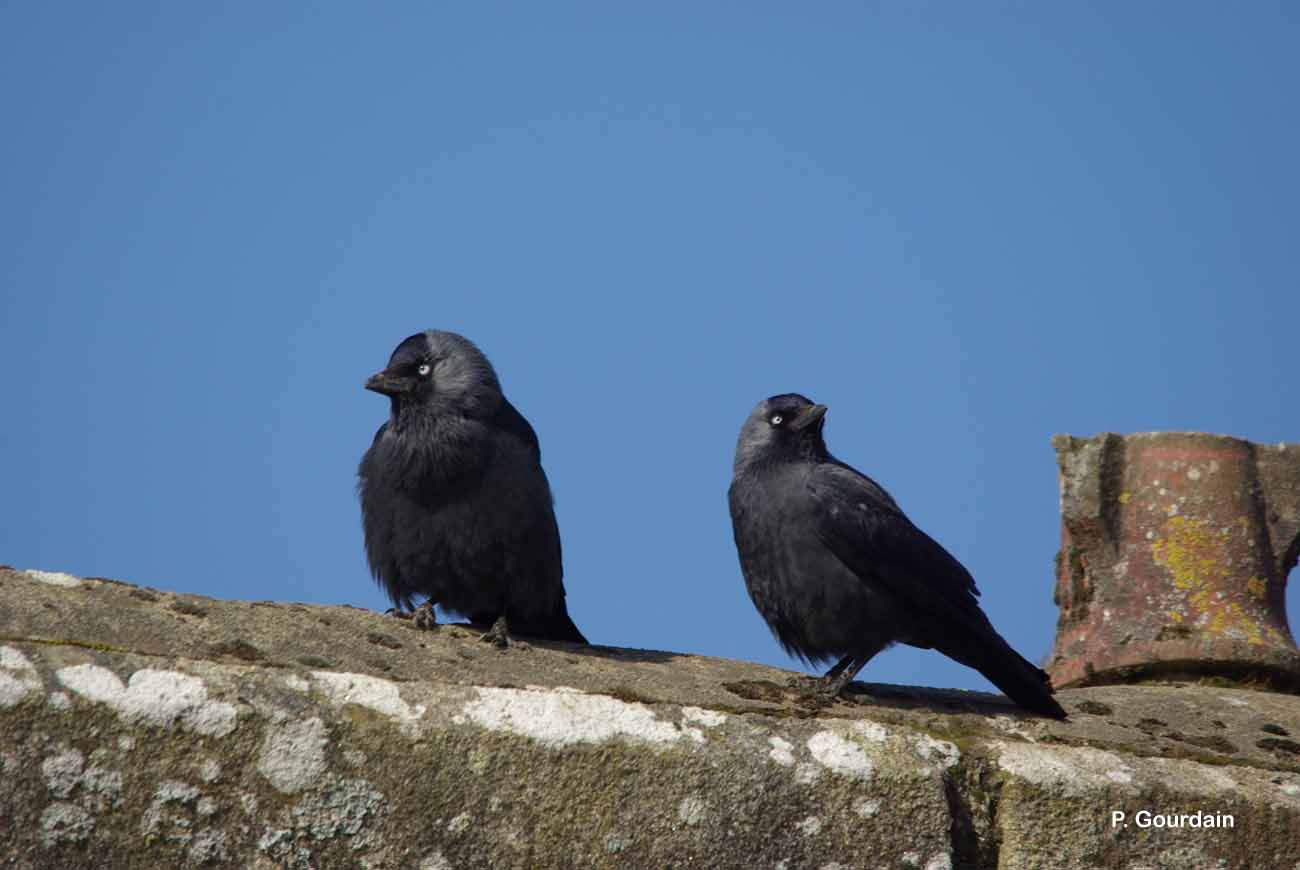
| Author : P. Gourdain |
 |
To get the picture, please visit:
Philippe GOURDAIN
Muséum national d'Histoire naturelle - Service du Patrimoine Naturel
36 rue Geoffroy Saint-Hilaire
CP 41
75 231 PARIS CEDEX 05
e-mail : inpn@mnhn.fr
Legend: Locronan
Despite the Creative Commons license, please inform the author of the use which will be made of his photo
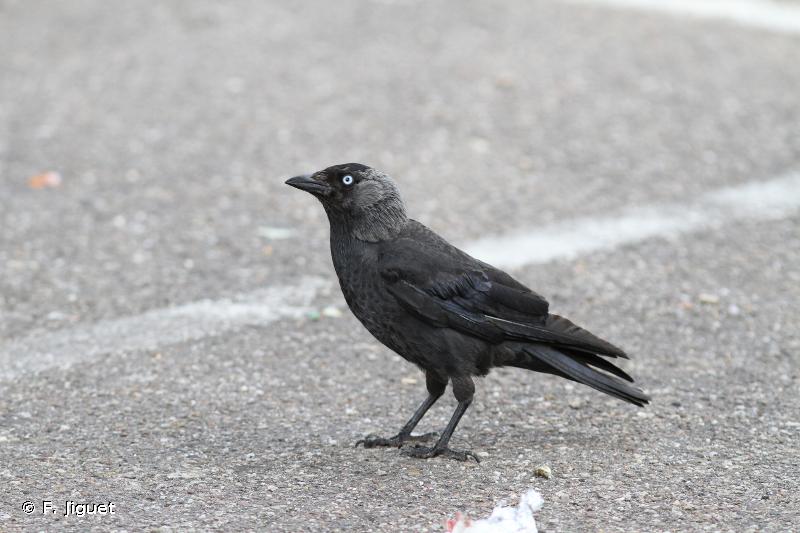
| Author : F. Jiguet |
 |
To get the picture, please visit:
Frédéric Jiguet
CRBPO
email : inpn@mnhn.fr
Despite the Creative Commons license, please inform the author of the use which will be made of his photo

| Author : J. Comolet-Tirman |
 |
To get the picture, please visit:
Jacques COMOLET-TIRMAN
Muséum national d'Histoire naturelle - Service du Patrimoine Naturel
36 rue Geoffroy Saint-Hilaire
CP 41
75 231 PARIS CEDEX 05
e-mail : inpn@mnhn.fr
Any reuse of one or more photographs on this site is subject to an authorization request from the author.
Link to the Code of Intellectual Property (Legifrance)
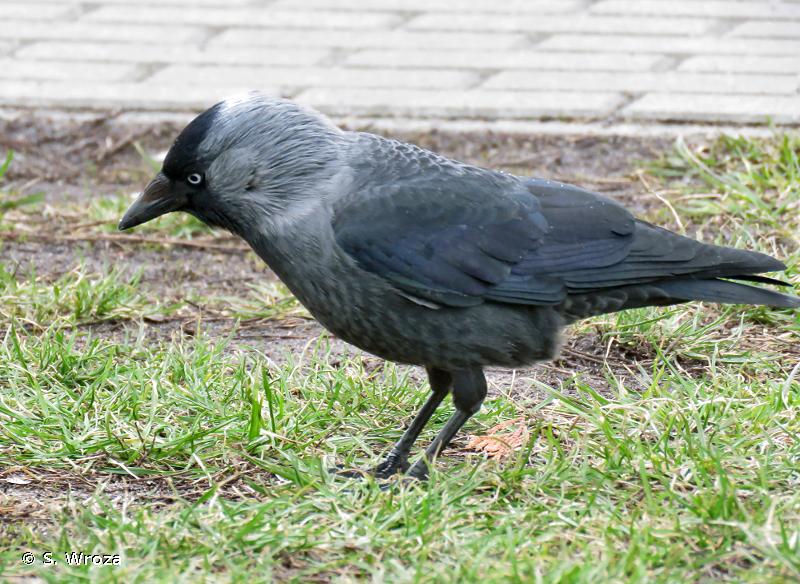
| Author : S. Wroza |
 |
Despite the Creative Commons license, please inform the author of the use which will be made of his photo
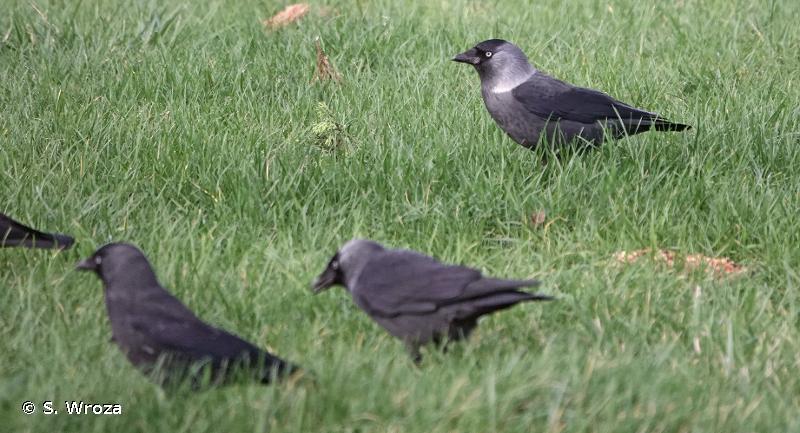
| Author : S. Wroza |
 |
Despite the Creative Commons license, please inform the author of the use which will be made of his photo

| Author : S. Wroza |
 |
Despite the Creative Commons license, please inform the author of the use which will be made of his photo
Taille/poids :
Longueur totale : 30 à 31 cm. Poids : 224 à 257 g.
Diagnose :
L'oiseau adulte est d'apparence noire, mais si la calotte, le bec et les pattes sont vraiment noirs, les côtés de la tête et l'arrière du cou sont gris cendré, le reste des parties supérieures noires à reflets violacées et verdâtres et les parties inférieures gris noirâtre. L'iris est blanc. Chez les jeunes, le noir et le gris sont teintés de brunâtre ; l'iris est bleu grisâtre. Le cri du Choucas des tours qui lui a valu son nom est typique.
Détermination :
Simple. Facile sur photo.
Les deux seuls oiseaux avec lesquels le Choucas des tours peut être confondu sont le Corbeau freux (Corvus frugilegus) et la Corneille noire (Corvus corone), notamment mêlés au milieu de bandes mixtes de Corvidés. Toutefois, la taille et l'envergure plus grandes rendent relativement aisée la détermination de ces deux dernières espèces en vol.
Période d'observation :
Toute l'année.
Biologie-éthologie :
La part des insectes dans le régime alimentaire du choucas est nettement plus importante que dans celle des autres espèces de corvidés et les invertébrés constituent l'essentiel du régime alimentaire des jeunes. L'espèce est toutefois omnivore et très opportuniste. C'est ainsi qu'elle peut aussi bien se nourrir de fruits, de baies, de glands, de graines ou de tubercules divers.
Biogéographie et écologie :
Largement réparti à travers l'Eurasie où plusieurs sous-espèces ont été distinguées. L'espèce habite une grande variété de milieux à l'exclusion des zones de haute montagne et des secteurs densément boisés. La grande capacité d'adaptation de l'espèce, certainement à l'origine de son expansion géographique, lui a permis de coloniser de nombreux sites liés à l'activité humaine qu'ils soient urbains, industriels ou ruraux.
Compilé par J. Comolet-Tirman à partir des Cahiers d’habitats.(UMS 2006 Patrimoine Naturel (AFB / CNRS / MNHN)),2017
Continental
Metropolitan France
Overseas
Marine
Metropolitan France
Overseas
The map presents a summary at the 10 x 10 km grid of the observation data for the species transmitted to the SINP. These data have been subjected to validation filters.
The map presents a reference distribution layer of the species at the scale of departments and marine sectors. The presence and absence data were established by expertise within a network of partners. This reference distribution is used in the validation process of the SINP data at the INPN level.
Corresponds to a report on the basis of at least one observation proved within a period of 10 years (20 years for little-known invertebrates) preceding the year and no presumption of extinction since obtaining the last data nor doubt on reproductive and implemented nature of this population. For migratory species, the presence indicated concerns areas of reproduction.
This status is based on one or more of the following criteria:
This point covers the absence, more difficult by nature to demonstrate than presence. This status is based on one or more of the following criteria:
This status must be assigned to a department in which the presence of the species is casual.
Particular case of absence due to a proven extinction less than a half century ago (older disappearances are treated as "no probable or definite").
In the state of knowledge, we can not comment on the presence or absence in the current department. This is the default status when not comprised in one of the previous categories or whenever there is doubt.
The map shows the global distribution of the species based on GBIF data (Global Biodiversity Information Facility).
